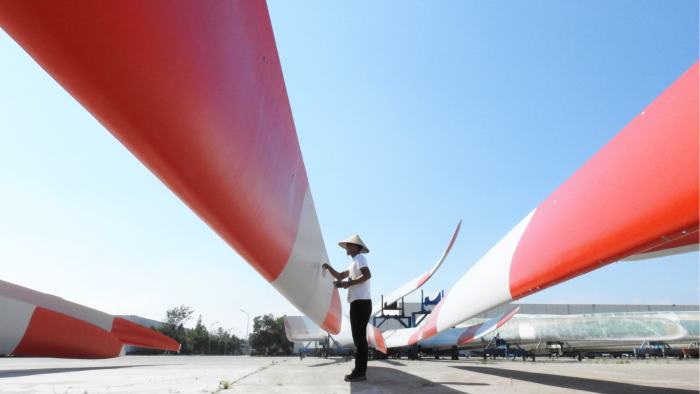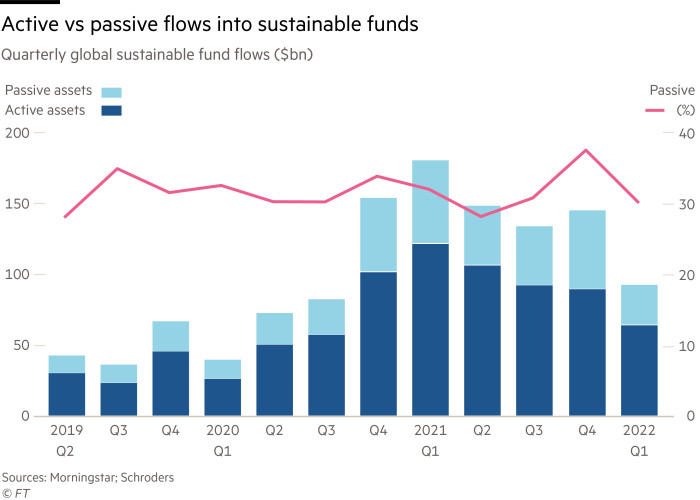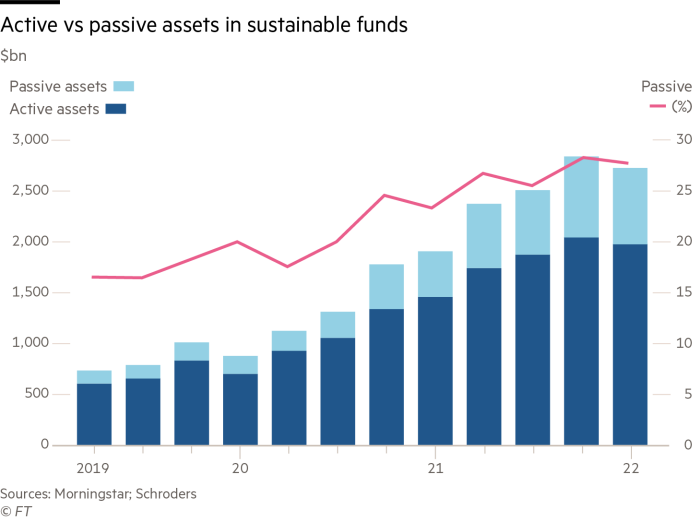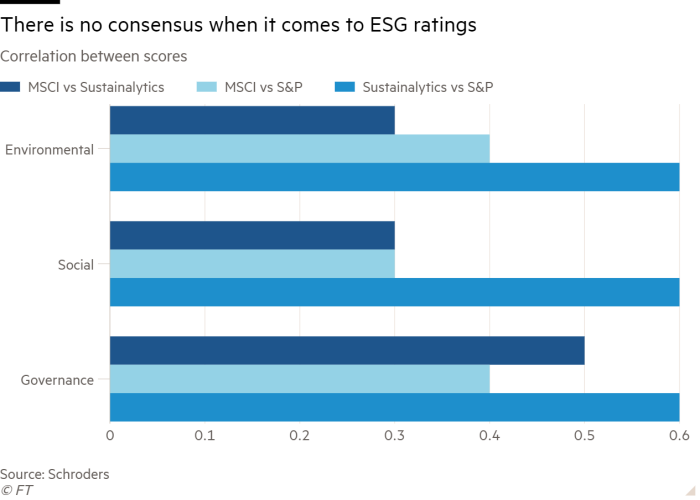Why sustainable investors may rue going passive

Roula Khalaf, Editor of the FT, selects her favourite stories in this weekly newsletter.
Growing social and environmental pressures are reshaping economies before our very eyes, creating both risks and opportunities for investors.
A forward-looking view of our fast-evolving world, rather than a reliance on past drivers of investment success, will prove critical to profitable portfolio management.
But many investors have turned to passive funds over recent years — an approach that is most unlikely to deliver the best results.
I say this as an active manager. But hear me out.
Passives now account for over one-quarter of global investments in sustainable funds. While this momentum has clearly demonstrated the demand for low-cost, easy access to global markets, investors in passive sustainable funds risk a mismatch between what they expect and the reality of what they receive.

With traditional investment criteria, views of categories such as “large cap” or “high yield” are relatively consistent. So investors in passive strategies focusing on such characteristics have a good idea of the sorts of stocks those funds will hold.

But sustainable investment is very different. There are stark inconsistencies between the scores awarded to companies by different environmental, social and governance (ESG) rating firms, many of which are used to populate the indices of numerous passive ESG products.
This is clear even among the most widely used and well-known scoring systems for company ESG measurement. Passive ESG strategies are therefore only as useful as the ratings on which they are based, which as our research demonstrates, vary considerably. Furthermore, many ratings are backward-looking and so usually fail to predict unexpected controversies.
This is not surprising. For one thing, ESG analysis encompasses a huge range of topics and the importance attached to each can vary significantly. More importantly, sustainability performance cannot be captured by quantitative analysis alone.
All this underpins the importance of an active investment approach.
Identifying a company’s ESG characteristics requires fundamental, bottom-up, forward looking analysis, where views are unavoidably going to differ across firms.

For active managers, this creates opportunity. Active managers by their very nature have a vested interest in the companies in which they invest: sustainable businesses underpin sustainable returns so by helping businesses become more sustainable is likely to benefit their overall portfolio and the returns for clients.
The active managers’ extensive insight and knowledge into companies and industries is critical to meaningful and thoughtful discussions to help drive change, tackle challenges and ensure company management teams are held to account to make the transition.
There is no simple, single answer to achieving a sustainable future. It will require significant time and investment in helping local and global corporates make the change.
So how can we accelerate this?
Rather than using screens to exclude vast swaths of companies, the key approach is to engage and influence as thoughtfully and comprehensively as possible. This ethos has been long established at Schroders and is an inseparable part of our investment process.
Most of our fund managers and analysts now have targets on high-quality engagements. From this year, these are assessed and form part of fund manager appraisals and the results therefore affect their earnings. Over time, we expect the breadth and intensity of our engagements to grow.
But engagement by itself is not enough. Measurement is critical to success. Any fund manager making a decision without first assessing the costs or benefits each company has for the environment and society is, to put it bluntly, flying blind.
The results of our latest Institutional Investor Study at Schroders clearly show that clients are also keen to understand. We must strive to show how different company behaviour on issues such as taxation, healthcare and innovation can deliver social costs or benefits.
We must also offer a granular view on carbon emissions on a company by company basis; and not just focus on the emissions accrued directly or through the firm’s value chain, but also consider the knock-on emissions created and rarely accounted for. There are other factors and nuances to consider in this debate. While it is true that large, passive managers have increased the size of their stewardship teams, a scaling up of thoughtful, critical analysis and diligence is far more difficult to replicate.
Clients will make their own assessments. By asking each portfolio manager for clear examples of effective engagement and a clear view of the sustainability profile of their portfolios they can make a clear-sighted judgment.
Over the long term, the importance of an active approach to sustainable investment will only become increasingly obvious.
Rory Bateman, is co-head of investment and head of equities, at Schroders. The views are his own
Climate Capital

Where climate change meets business, markets and politics. Explore the FT’s coverage here.
Are you curious about the FT’s environmental sustainability commitments? Find out more about our science-based targets here
Comments